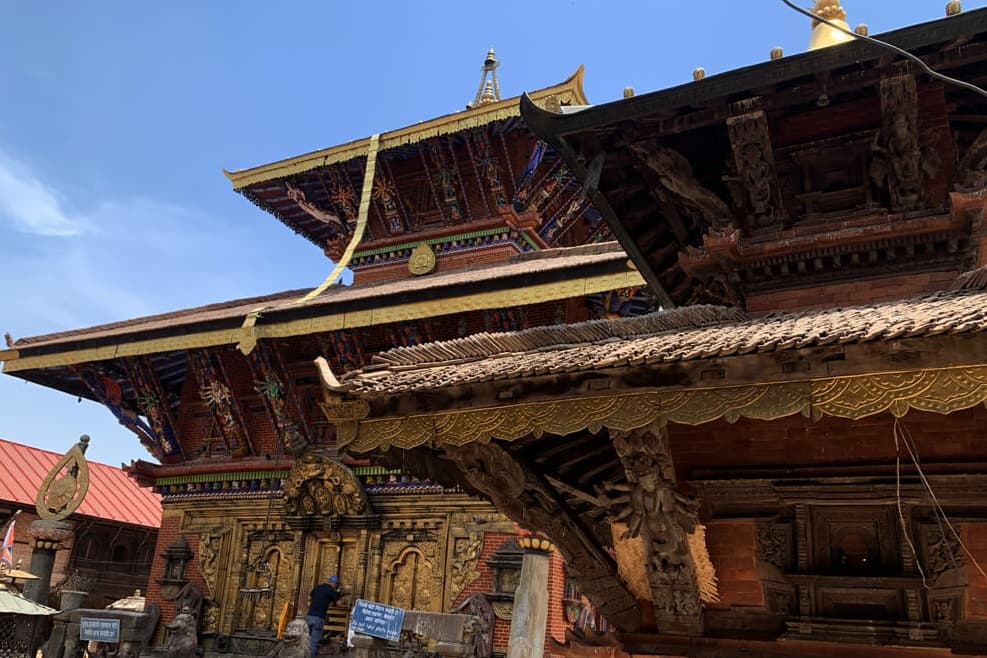Milarepa (c. 1052–c. 1135) was one of the most prolific yogis, poets, and tantric masters in Tibetan Buddhism. He is highly praised for this life journey that he went through with black magic deeds and ultimately became a fully enlightened being, after following the path of Guru Marpa. He grabbed the note on the transformative power of Buddhist practice.
About Jetsun Milarepa
Early Life of Milarepa:
Born in Tibet, Milarepa spent his early life full of struggles and hardships. In his childhood, he lost his father, who had a lot of wealth. But they were taken by his uncle and the sister of his father. He was mistreated, and his family had to work as servants. To get out of this and to take revenge, his mother sent him to learn black magic and destroy his uncle’s family and the villagers who insulted his family.
Spiritual Transformation:
For his deed with the power of black magic, Milarepa had guilt and went to Guru Marpa in search of redemption. With his immense power of tolerance and spiritual quest, he became the best student/follower of Lotsawa Marpa, going through all the painful labor; that were intense trials taken by Marpa. At last, he became successful in getting the Guhye Mantra and spiritual practices which Marpa learned from his Guru Naropa in India.
Solitary Retreats:
When Milarepa received the Guhye Mantra from his Guru Marpa, first he went back to his village to meet his mother and sister. His mother had already passed away and his sister had been begging in other places. Then he spent a long time in the isolated caves, meditating and practicing different mantras and spiritual practices alone, surviving on nettles and deepening his realization.
Teachings and Songs:
‘Dohas’ are the songs sung by Jetsun Milarepa in the Himalayan caves, which are the spontaneous overflow of his insights and learning along with his realization. They have remained as cornerstones of Tibetan spiritual literature.
Legacy:
Guru Marpa established the Kagyu school of Tibetan Buddhism and flourished through Jatsun Milarepa. His life and biography show the real quest for spiritual satisfaction that made Milarepa a demon character into a spiritual hero. Tsangyon Heruka mainly compiled his biography in the 15th Century, and now one can read it online.
Famous Milarepa Caves in Nepal
Milarepa Cave in Manang
Full Story: Manang Milarepa Cave
- 5 km away from the antique town of Braka village
- Located near the Annapurna Circuit Trekking trail
- Milarepa meditated there for 6 years
- Story of a hunter, his dog, and a deer in the form of a song
- The answer to why Milarepa's body was green
Milarepa Cave in Sankhu
- About 22 kilometers away from Thamel (central Kathmandu)
- Meditation in a peaceful setting
- The Vajrayogini temple is located nearby, which is a prominent temple in Nepal
Lapchi Milarepa Cave-Dolakha
- Located in the far north-east of Nepal in Bigu Rural Municipality
- Suitable for trekking on an undisturbed trail
- Lungthen cave
- Yuthok Cave
- Sephuk Cave
- Dudul Cave
- Bepa Cave
- Jangchup Stupa
Famous Milarepa Caves and Monasteries in Tibet
The renowned 11th-century yogi and poet, Jetsun Milarepa, meditated in different caves of Tibet. They are highly spiritual destinations for Buddhist devotees around the world.
Milarepa's Cave, Nyalam
It is located in the Gangka village, Nyalam County, Shigatse, Tibet. It has Milarepa’s handprint and a monastery, named Nyanang Pelgye Ling.
Milarepa Meditation Cave, Lhatse
It is located at Lhatse County, Shigatse Prefecture, which is the first retreat of Milarepa after receiving Guhye Mantra from Marpa.
Sekar Gutok Monastery
It is located in the Lhodza County, Shannan City, Tibet Autonomous Region. The monastery was built around 1080 CE by Milarepa under the guidance of his teacher Marpa.
Daklha Gampo Monastery
It is located in the Gyatsa County, southern Tibet, which was founded in 1121 CE by Je Gampopa, a disciple of Milarepa. It is a remarkable site for Tibet Buddhism, especially in the Kagyu tradition.
Milarepa Cave in Bhutan
Milarepa’s Meditation Cave at Jomolhari Ney
- Altitude: 4450 meters
- Approximately one hour's walk uphill from the Jomolhari Temple
- Jomolhari temple is an abode of one of the Five Tsheringma Sisters, female protector goddesses of the region
- The Milarepa cave is situated within a cliffside
- Devotees connect with Milarepa's legacy
Most Famous Songs of Milarepa
Here are some of Milarepa’s most famous and frequently quoted songs:
Song of a Yogi’s Joy in Solitude
“In the hermitage of the mountain solitude,
I find my true mind,
Free from the fetters of worldly desires,
I sing the song of joy.
With no one to flatter and nothing to fear,
I dwell in the dharma's radiant light.”
Song of Realization
“The nature of mind is empty,
Yet everything appears within it.
Like a dream, like a mirage—
This world is but a phantom play.
Understanding this, I let go of clinging,
And rest in the dharmakaya's embrace.”
Song to His Disciples
“If you wish to cross the ocean of samsara,
Cling not to the raft of worldly attachment.
The boat of renunciation alone will carry you
To the other shore of liberation.”
The Song of the Wild Nettle-Eater
Milarepa often lived on nothing but nettles; this poem reflects his ascetic joy:
“I, the yogi, eat nettles, wear the sky,
And dwell in caves where demons cry.
Yet in my heart, no fear arises—
For in the sky-like mind, all clinging dies.”
Song of the Cave of Happiness
“In this cave of happiness and ease,
I have found the path to truth.
No thoughts arise, no concepts cling,
In the sky of mind, all clouds dissolve.”
Kagyu Lineage Figure:
Tilopa → Naropa → Marpa → Milarepa → Gampopa → Kagyu schools
This unbroken chain emphasizes direct mind-to-mind transmission, meditation, and devotion to the guru as key to realizing the nature of the mind.
If you would like to visit the sacred caves of Jetsun Milarepa in Nepal, please, contact us via:
WhatsApp: +977 9851159455
Email: [email protected]



